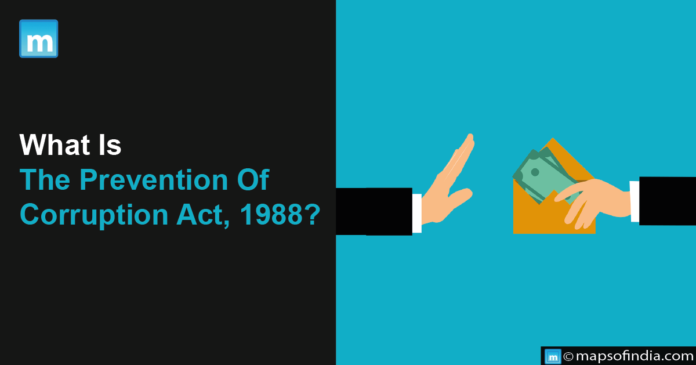Corruption has persisted for millennia in India. It starts with unscrupulous bosses who regard each assignment as an opportunity to make money. Corruption is considered one of the most serious impediments to growth, especially in developing countries like India and government organisations. Even the education industry, which is supposed to instill in pupils exemplary ethical behaviour, is not susceptible to this evil.
The Criminal Law (Amendment) Ordinance of 1944 was one of the initial pieces of legislation to address the issue of corruption. Its purpose was to prevent the sale or concealment of property gained by bribery, fraud, or other connected offences. Consequently, the Prevention of Corruption Act of 1988 (POCA) was enacted to codify all existing laws, combat corruption in government organisations, and investigate and punish public employees who commit corrupt activities. It is a potent weapon in the fight against this evil. The efficacy of this law is vital to the anti-corruption effort’s effectiveness. Under this Act, the Central Government has the jurisdiction to appoint justices to examine and trial cases involving violations chargeable under the Act or a conspiracy to conduct or attempt to perpetrate the offences outlined by the Act.
Characteristics of the Act
The following are a few of the Act’s important features:
- It has enlarged the definition’s relevance to include phrases such as “public responsibility” and “public servant” under the defining clause of Section 2 of the Law.
- By the 1973 Code of Criminal Procedure, the burden of evidence has been shifted from the prosecution to the individual accused of the crime.
- The Act’s criteria are evident: the investigation must be conducted by an officer having at least the level of Deputy Superintendent of Police.
- The 1988 Act expanded the term “public servant” to include Central Government employees, union territories, banking institutions, the University Grants Commission (UGC), vice-chancellors, professors, etc.
Are Cabinet Ministers, Deputy Prime Ministers, and Prime Ministers included?
A Minister, Prime Minister, or Chief Minister is a public official, based on Clause (12) of Section 21 of the Indian Penal Code. In M. Karunanidhi v. Union of India (1979), the Supreme Court found that a Minister is hired by and subjected to the power of the Governor, gets remuneration for labour or responsibilities on behalf of the general public, and receives his pay from the public funds.
Accepting gifts, accepting incentives, and influencing public officials
The POCA defines situations of getting satisfaction, manipulating public authorities, or taking gifts under sections 7 to 11. The Act classifies offences based on the seriousness of their consequences. Similarly, abetment, conspiracy, collaboration, and effort to conduct these crimes have been declared criminal since it is more important to prevent corruption and bribery. Various activities have been classed and sanctioned under various Sections.
It is worth noting that these sections are now being revised extensively in light of India’s obligations under the UNCAC. The current clauses of the Prevention of Corruption Act are outlined below. The requirements of the Act for illegal transactions usually contain a public servant and unlawful compensation in exchange for a benefit from the public servant or as an encouragement or incentive for the public servant.




